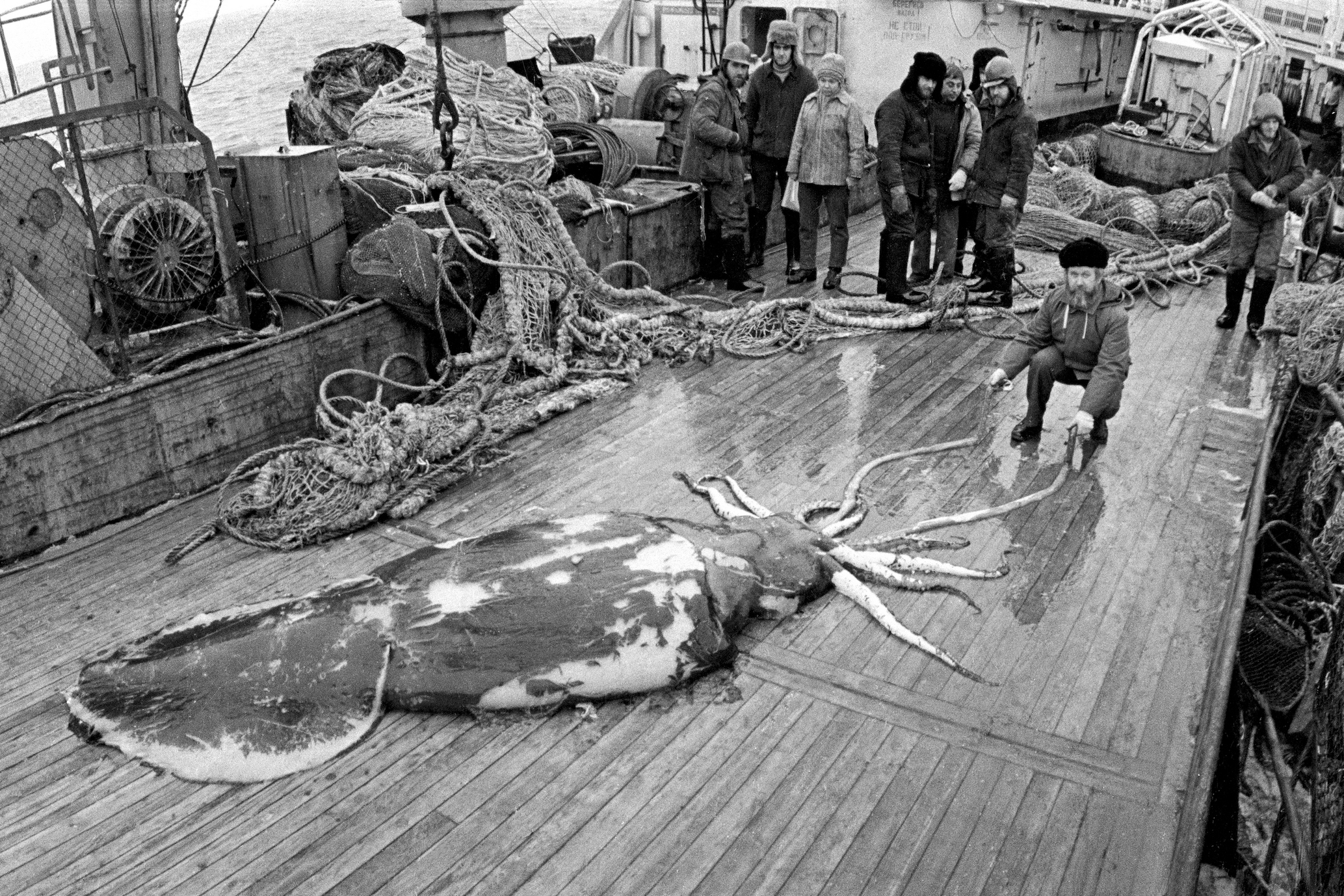Everything You Need To Know About Squids
Did you ever hear about the colossal squid? As the name suggests, it is not only the largest existing squid but even the largest invertebrate on earth. The colossal squid can get reach a whopping 14 meters (46 feet) in length and 750 kg (1,650 lb) in weight – at least that’s what scientists assume! There is not a lot of information available about this massive sea dweller, as it has not been observed alive and in its natural habitat yet. Colossal squids live in the deepest depth of the Southern Ocean, down to 1,800 m (6,000 ft) below the water’s surface.
And this is exactly where the Kolossal team intends to go during their three years search to find the elusive colossal squid. Chimu Adventures’ charter launches the first-ever Antarctic expedition with that specific aim, with its first voyage departing very soon on November 30th! Using innovative deep-sea technology, Kolossal will deploy the cameras into the deep Antarctic waters. The goal? To hopefully locate and film a living colossal squid by 2025.

With that in mind, we think that squids are extremely fascinating and diverse creatures that we know shockingly little about! So, let’s change that, shall we? Check out our facts about squid below to learn more about these versatile invertebrates.
While the colossal squid is only one of the more than 300 existing squid species, these so-called cephalopods are the most highly developed invertebrates on earth. Squids inhabit almost every major saltwater body on our planet and even some freshwater bodies as well, whereas the North Atlantic Ocean is home to the most squid species. Here is everything else you need to know about squids!
Chameleons of the Sea
Clear the stage for the coolest defence mechanism there is! Just like chameleons, squid skin is covered in chromatophores, which are special cells allowing the squid to change its colours to match its surroundings. This can make them practically invisible to their predators!
Secret weapon in three, two, one!
Another smart skill that comes in handy to confuse predators is that squids are infamous for squirting ink when they feel threatened. Their ink primarily consists of melanin, and it clouds the water, which gives the ‘ink fish’ enough time to escape from its predators. The ink usually doesn’t harm the predator, it only confuses their senses, which plays into the squid’s hands… eeh, tentacles, of course!
A top-notch nervous system
As if this wasn’t impressive enough already, a squid’s major flex is yet to come: The cephalopods have incredible nervous systems. In fact, the most complex ones among invertebrates! Their ring-shaped brain surrounds their throat and is protected by an internal shell made from cartilage. Also, nerves not only allow squid to see and react to information but also control their muscles. The extraordinary nervous system definitely makes up for the cephalopod’s rather small internal skeleton.
Blood of a somewhat different kind
Blood is red? Not when it comes to squid! As if the cephalopods weren’t already fascinating enough, they manage to surprise us once again with their blue blood. Yes, you have heard correctly! Instead of haemoglobin, which gives blood the red colour we are used to, squid blood contains hemocyanin which makes it look blue. This protein does serve the same purpose of carrying oxygen around a squid’s body through the blood. Meanwhile, this blood is pumped by the squid’s (listen up) THREE hearts!
On the menu
Squids are carnivores and mainly feed on fish and crustaceans. Coming with no surprise, our talented friends are great hunters and can even capture larger marine animals with their long arms and suckers. Some squid species even have toxic saliva which subdues their prey with no effort! Believe it or not, squid actually have small teeth on the side of their tongues. They use them to chop up their food into manageable pieces before swallowing it!
Master of the seas
Another trick squids have up their sleeves – the buoyant invertebrates locomote in various, and very speedy ways. When in danger, squid resort to jetting, their most popular type of movement to escape from a threat. As if powered by a jet, squids propel forward with the help of contractions in their mantle cavity’s muscular wall. And all that happens tail first, not headfirst, with an impressive speed of up to 40 km/h (25 mph)!

How is that for today’s share of knowledge?
We are outright fascinated by squids and their incredibly unique way of managing underwater life! This is why we are more than excited to be part of the expedition to find the colossal squid in its natural habitat.
And you can be part of it, too! Join us on one of our voyages on the Ocean Endeavor, our vessel that serves as a base for this three-year expedition. Contact our helpful team, and book a trip with our Antarctica expedition cruise. Enjoy the wonders of the seventh continent while experiencing the ‘colossal squid mission’ up-close. We can’t wait to make history with you!
Where Will You Go Next ?
- Popular Destinations
- Antarctica
- The Arctic
- South America
- Central America
- More to explore
- Amazon
- Antarctic Circle
- Antarctic Peninsula
- Argentina
- Bolivia
- Brazil
- Canadian Arctic
- Chile
- Colombia
- Costa Rica & Panama
- East Antarctica
- Ecuador
- Galapagos Islands
- Greenland
- Guatemala & Honduras
- Machu Picchu
- Mexico
- Patagonia
- Peru
- South Georgia and Falkland Islands
- Spitsbergen
- Sub Antarctic Islands

Talk to one of our experienced Destination Specialists to turn your Antarctic, Arctic and South American dream into a reality.
Contact us